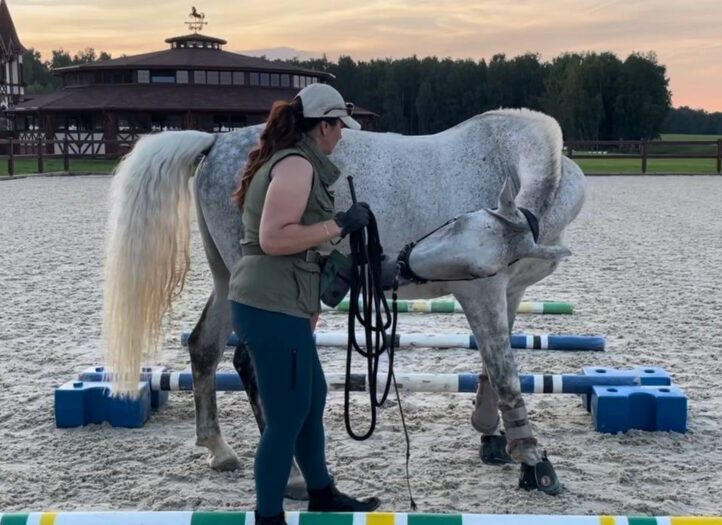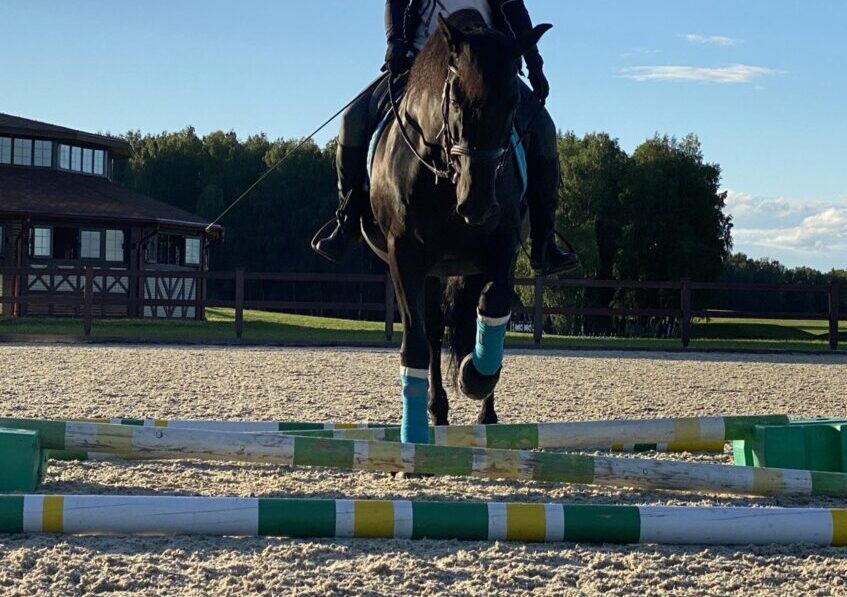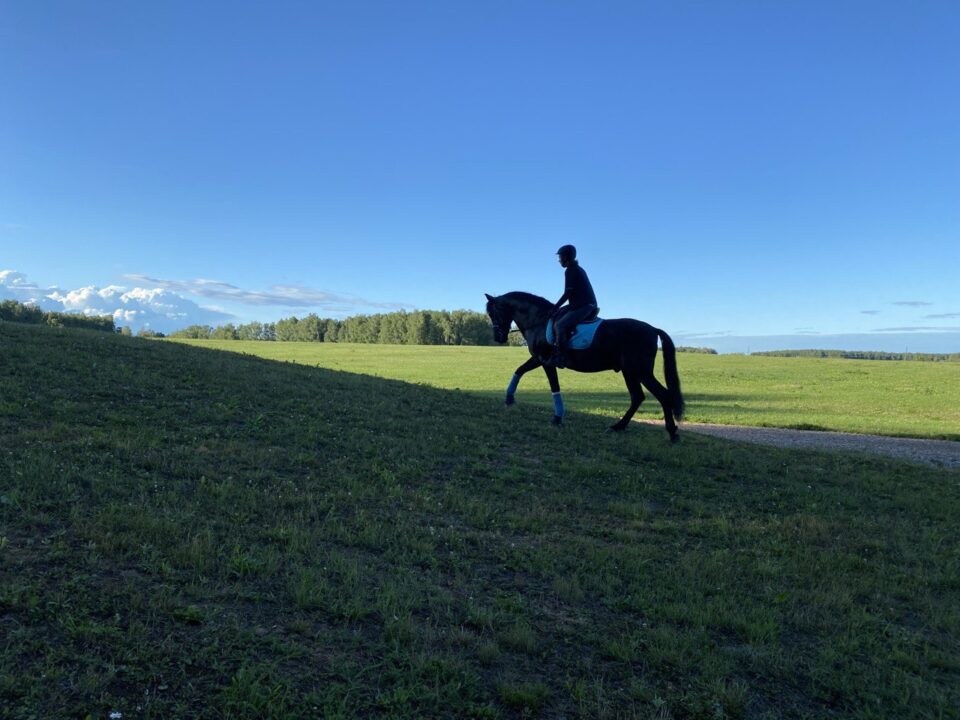
The topline is the group of muscles that run along a horse’s spine: from the top of the neck to the withers, down the back and loin, over the top of the hip to the crotch area. Having a strong back, your horse carries you more easily. It ensures the right movement, strength and optimal performance. With these five exercises you can turn your horse into a real top athlete.
Why make your horse’s back stronger?
A strong topline supports the spine and the rider in the saddle. It also provides proper movement and strength. The purpose of this muscle group is to keep the spine firm. Is your horse’s topline weak? Then your horse moves less smoothly. Moreover, it can underperform and be more prone to injuries.
Additional advantage of a strong topline: more comfort for you as a rider. You sit more comfortably, because your horse is better balanced and can bear the rider’s weight better.

Stretches are ideal as a warm-up exercise to make your horse more flexible. We will give you a good stretch that you can perform from the ground:
- Have your horse bend its neck in the direction and height of its hock. Note: It is not supposed to touch its hock.
- Its head may stay quite far from its body. That’s totally okay, see how far it can go.
- Does your horse step or lift a leg? That is a sign that it is having difficulty with this exercise and is compensating. Do not force this.
- Do this exercise on both sides. Vary by bending your horse low to the side towards its right and left forefeet. In this case the long back muscle will get stretched.
Looking for more stretches? Read the blog 5 exercises to make your horse more flexible.
Exercise 2: Go backwards
A good exercise to strengthen the abs is going backwards. Why do we train the abs? The abdominal muscles support your horse’s back. If it has a strong core, it will provide more support when you work on its back.
Keep to the railing.
Make sure your horse walks diagonally backwards. Make sure it lifts its feet and doesn’t drag on the bottom. Alternate with (active) riding forward.

Exercise 3: Work with beams or cavalettis
You perform this exercise on the lunge or under the saddle. To walk over beams or cavaletti, your horse needs to lift its legs higher. With this it trains its chest, abdominal and back muscles. Vary and lay out a fun course that suits the level of your horse. It is a varied and challenging training. You also train the alertness of your horse. It has to be very careful where it puts its legs. So, win-win.

Has your horse ever ridden over beams? First, let it walk over beams by hand.
- Start driving over one beam in step. Switch to trot.
- Ride down the center of the bar at an even pace.
- Is it good at walk and trot? Try canter now.
- Can it work with one bar? Now expand to three or four bars
Extra tip: Ride a lot of transitions during your training sessions. You build strength and balance in the back and hindquarters.
Exercise 4: Hills, hills, hills
A hill is a great tool for topline training. Riding up and down a hill increases the activity of the muscles in the hindquarters, back and abs. If the hill is steep and long, you can walk up and down once or twice. Walking down a hill is just as good, because your horse has to master its descent.

- Start with a collected trot or walk
- Ensure a correct and upright posture of your horse
Are you going uphill? Then bring your weight forward a little more, so that you do not get in the way of your horse. The steeper the hill, the more forward your position is. Are you going down hill? Then do the opposite.
Ensure a controlled slow descent to exercise your horse’s muscles.
Exercise 5: Travers
Travers is an exercise in the higher dressage classes. At travers, you ride on two hoof beats and four tracks. It is similar to shoulder-in, but requires a different coordination: more longitudinal bending of the body is required.
This is how you run it:
- Your horse is looking in the same direction it is moving.
- It has its shoulders near the wall, and the hindquarters are turned inward.
- You take the hindquarters up the long side from the corner.
- Use your inner leg as a fulcrum for your horse to turn around.
Track your training with the SaddleClip
When you train with the Equestic SaddleClip track you can analyze your training. This way you know exactly what is happening and where more attention is needed. Do you work on a strong topline with your horse? Then the graphs ‘intensity’ and ‘direction’ are useful.

The intensity graph keeps track of how many intensive and less intensive workouts you do. You want to have a good balance in this. If you don’t train intensively enough, you won’t build muscle. If you train too often, too long or too hard, your horse can experience stress.








